Text


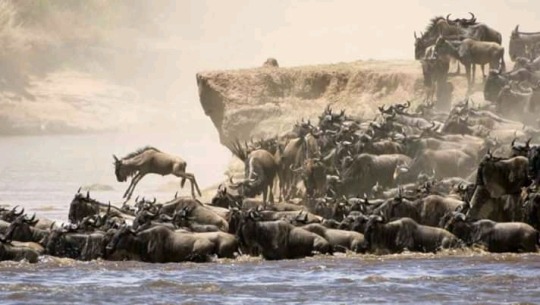
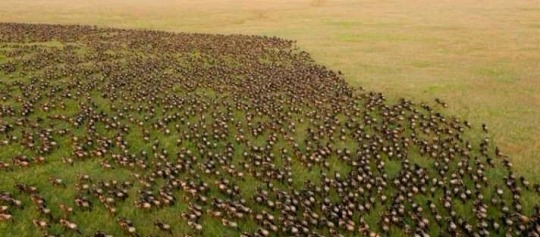
Great Migration Safari Holidays: the basics
You can see the Great Migration in Tanzania all year round – they migrate in a circular motion around the Serengeti National Park as such it is an ongoing event. Below we will dissect where the wildebeest usually are at different times of the year.
The Great Wildebeest Migration is rarely in the Masai Mara Kenya; the herds only ever venture there as an extension of their grazing lands in the northern point of Tanzania if they need to for fresh pastures. You can only find the migration in Kenya within a few months of the year when they head towards the border, and even then, most of the herds are still mulling around the northern parts of the Serengeti anyway...
The Annual Migration overview: the best times to visit The Serengeti Migration
July – October: This is when the wildebeest are in the northern Serengeti plains, and you have a chance of seeing up to thousands crossing the great Mara River. As the sight of the wildebeest crossing the so dramatic, it is considered by many the most desirable time to see the migration.
December – March: Currently the wildebeest are in the southern area of the Serengeti, more specifically in Ndutu which is actually in the Ngorongoro Conservation Area, and it is calving season. Along with the river crossings, this is a real highlight of the wildebeest’s journey and a fabulous time to see the herds congregate on the dramatic sweeping plains of the south. February is the only time of year when you are almost guaranteed to see the big herds all together as they always come south for calving season.
The rest of the year: In November, April, May and June the migration is “in between” locations and as such these months are slightly transitional times to see the herds. November is the short rains, April and May are the long rains and as such the grass is green in these months across the Serengeti, so the wildebeest are more dispersed than in the prime time of July – October and December – March. Thus, you don’t get as many of those condensed big herds which people get excited about!
Although we try to be as comprehensive as possible, something that is quite difficult to express on paper is a lot easier to explain over the phone, so please do just give us a call for a simple overview of the Migration's route.
6 notes
·
View notes
Text




WHY TANZANIA?
Home
WHY TANZANIA?
So often guests ask themselves Why should we choose Tanzania for our Safari?” After serious consideration on how best to summarise all the reasons why we came up with a few 5 points that answer that question
Not only can the country boast three of Africa’s Seven Natural Wonders, but it is also blessed with the highest mountain in Africa, and has the largest and deepest lakes in Africa too.
It’s hard to narrow down why everyone should visit Tanzania when there is so much to see and do, but here are our top 5 reasons for a visit:
1. Wildlife and birdlife
Tanzania has the largest concentration and diversity of animals in Africa, and there are over 1,100 bird species to spot in the country. It also proudly showcases some of the world’s most treasured national parks and game reserves, including the Selous Game Reserve, which is the world’s largest game reserve. This is home to more than 120,000 elephants, 160,000 buffaloes, and about 2,000 rhinos. Furthermore, the Selous boasts Africa’s greatest concentration of hippos, crocodiles and wild dogs.
The Ngorongoro Crater is another of the most pristine wildernesses on earth and is a UNESCO World Heritage Site thanks to being the world’s largest intact crater. On the crater floor, grassland blends into swamps, lakes, rivers, woodland, and mountains – all a haven for wildlife, including the largest predator population in Africa. The Big Five even call this volcanic crater home, and it is one of the last wild refuges for the black rhino.
2. The Maasai people
The ancient nomadic stewards of much of the Rift Valley region are the iconic Maasai. They are among the most well known local tribes due to living in traditional Maasai villages near the Serengeti National Park and Ngorongoro Conservation Area. They are most recognized by their distinctive customs and dress; their stunning bright robes, beaded jewelry, and remarkable height have fascinated visitors for decades.
Many Maasai continue to live as they have for centuries, in interconnected communities without any electricity, cell phones, internet or running water. Traditional Maasai life centers around their cattle, which is their primary source of food. The measure of a man’s wealth can be measured in terms of cattle and children.
3. The wildebeest migration
The Serengeti National Park is Tanzania’s oldest and most popular park, and the Serengeti migration has also recently been proclaimed as one of the Seven Natural Wonders of Africa. This annual event is when visitors can bear witness to some six million hooves pounding across the open plains, as more than 200,000 zebra and 300,000 Thomson’s gazelle join the wildebeests’ trek for fresh grazing. Yet even when the migration is quiet, the Serengeti offers some of the most scintillating game viewing in Africa.
Much of the annual migration cycle takes place in Tanzania, from the frenzied crossing of the Mara River in the north of the Serengeti in August and September to a two-month bout of birthing in February and March on the Ndutu Plains, before the 1,000km pilgrimage begins again.
4. Mount Kilimanjaro
Mount Kilimanjaro with its three volcanic cones – Kibo, Mawenzi, and Shira – is a dormant volcano in Tanzania. It rises approximately 4,877 metres (16,001 ft) from its base, to 5,895 metres (19,341 ft) above sea level. The mountain is part of the Kilimanjaro National Park and is a major climbing destination.
5. Zanzibar
Zanzibar is an archipelago of historic Indian Ocean islands, awash with atmosphere, intrigue, and idyllic beach experiences. Zanzibar has a wide range of accommodation choices and plenty to see, do and discover. It is the perfect place to relax after an exhilarating safari or climbing Kilimanjaro. It is also a glorious paradise for honeymooners or a romantic holiday getaway. As the site of Sultans’ palaces and renowned for its spice plantations, the little island republic of Zanzibar is a must-see for any visitor to Tanzania.
Visitors to Zanzibar tend to arrive and leave via Stone Town, the island capital and a historic hub for commerce and culture. This ancient center was the seat of the Sultans, whose crumbling palaces, bathhouses and mosques are a legacy of this opulent and vibrant time at the heart of the gold trade. Stone Town remains a wonderful place to spend a night or two, getting lost among the ancient buildings and labyrinthine streets, eating fresh fish on the seafront, and breathing in the sights, sounds and smells of a truly Swahili center.
Famous for its glorious white sand beaches and remarkable coral reefs, Zanzibar is a beach and sun lover’s paradise where you can while away your days by watching the white dhow sails cruising across the blue waters of the Indian Ocean.
2 notes
·
View notes
Text
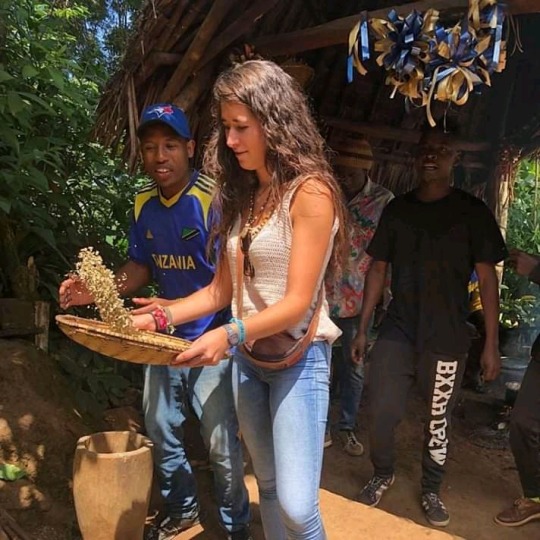

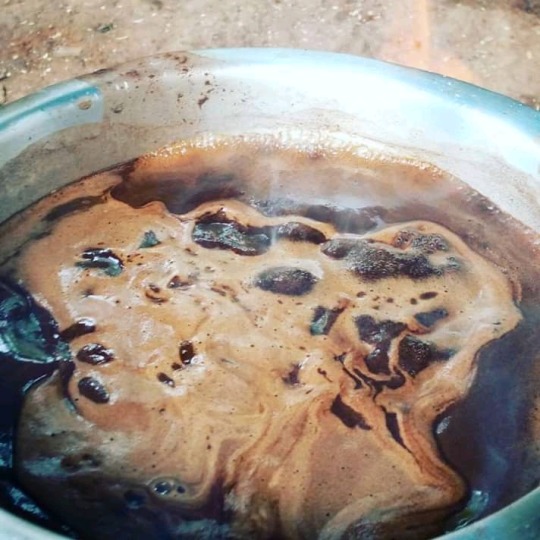




Materuni Waterfall & Coffee Tour
A varied day on the slopes of Kilimanjaro
Materuni is the home of the Chagga tribe and is still an authentic tribal village. This charming place is just 15km away from Moshi Town and is the last village before the Kilimanjaro National Park.
Upon arrival, you will register at the village office and your trip can begin.
First you will visit the waterfalls, which are around a 40 minute walk away. On the way, your guide will inform you about the culture of the Chagga, village life and explain the surrounding fauna and flora. The views are truly breathtaking, and with some luck you will see the summit of Kilimanjaro. When you reach the waterfalls, you will see that they are more than 80 meters high. The pool at the bottom of the waterfall is an inviting place for a refreshing swim so don‘t forget your swimwear!
After having enjoyed the scenery, you slowly return with your guide to Materuni village, where you will experience a traditional Chagga lunch. You also will have the opportunity to taste our local banana beer definitely not to be missed!
But that’s not all.
Next the coffee experience awaits you. Here you will learn how coffee is cultivated, dried, roasted and further processed. You will also be invited to help with the grinding of the coffee, which is traditionally accompanied by Chagga songs and dances – a fun way to immerse yourself in the local culture. Before you say goodbye and return in the afternoon to Moshi, you can savour the coffee you made and appreciate the views of the surrounding rainforest.
E-mail:[email protected]
#animals#original photographers#travel#ray toro#killjoys#mikey way#waterfall#hiking#cg spinel#coffee#coffetime#localguides#localfood#localmusic#local plumber#art#photographers on tumblr#anime#steven quartz universe
6 notes
·
View notes
Text
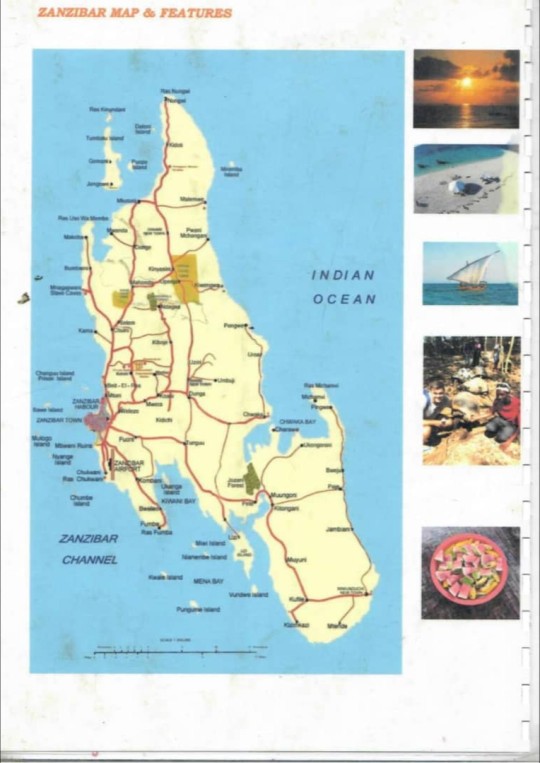
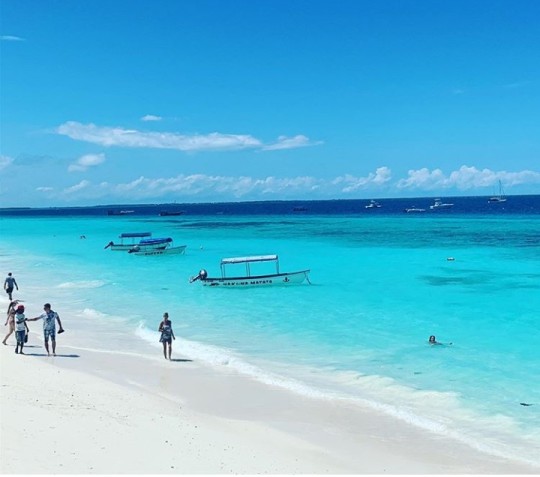
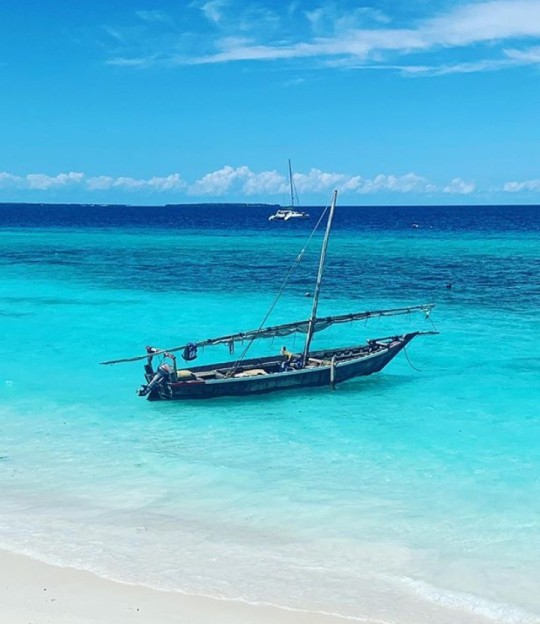
The Best Beaches on Zanzibar
Zanzibar; the romantic, exotic archipelago, reminiscent of Arabian nights and Indian Ocean indolence. Only 15 minutes flight from the mainland, the wonderfully sleepy island of Zanzibar is one of East Africa's finest beach destinations, surrounded by coral reefs with idyllic beaches lined by huge sweeping palm trees. Zanzibar beaches are the obvious addition to a safari on mainland Tanzania, or should we say that a short safari is the obvious addition to your Zanzibar holiday, with the beautiful Selous less than an hour away.
TALK TO ONE OF OUR EXPERTS:Call usEmail us
Where to stay in Zanzibar can be daunting; with so many hotels, and a lot of tourist traps, it really takes a conversation with the experts to sort the wheat from the chaff and find a beach hotel which is just right for you. From years of visiting and revisiting the most pristine spots on the island, we can guide you to the best places to stay in Zanzibar. Though many visitors spend a night or two in Stone Town, the charismatic island capital, the real attraction of is its glorious coral sand beaches, and the fantastic snorkelling and diving. Tourism has eclipsed spice trading as the main form of income, but islands retain their rustic African charm despite the developments of the last decade. Zanzibaris a land apart, entirely charismatic and well worth a visit.
Zanzibar Beaches - The best beaches in Zanzibar
Nungwi Beach & Kendwa, North Zanzibar
Nungwi and Kendwa beaches are truly beautiful; they are on the only side of the island which is consistently crystal clear water lapping brilliant white sands. The northern beaches really are where to stay in Zanzibar if you are looking for that idyllic Indian Ocean beach experience. The rest of Zanzibar’s beaches (east coast, as the west coast really doesn’t give you anything!) are tidal which means whilst you may be able to sink your toes in to the powdery sand, the sea may be a bit of a trek away, depending on the time of day. Nungwi & Kendwa are home to some big hotels and a backpacker culture, but the beaches are exceptional here, and there are fantastic hotel options if you know where to look.
Nungwi & Kendwa Beaches – Where to stay
Our favourite hotels include the new exciting addition to Zanzibar's beach resorts, Zuri Zanzibar, Hideaway of Nungwi, Diamonds La Gemma & Essque Zalu.These are all absolutely fantastic value for money and suit those who like to be around a bustling environment and on a stunning beach – staying in these hotels means you get your own slice of privacy in a really fun part of the island.
Matemwe, North East Zanzibar
Matemwe beach can be found slightly to the east of Nungwi and Kendwa. As such, contrary to the more northern beaches, it can be tidal here. The area has been relatively untouched by tourism until recent years, and it can now get a bit busy. However, when the tide is in some hotels here offer a pocket of Indian Ocean paradise for an unbelievable price.
Matemwe Beach – Where to stay
There are a few really well established boutique hotels here far from the madding crowd such as Sunshine Hotel, Matemwe Lodge and Kasha. Sunshine is our favourite to recommend and is a slightly more intimate version of Pongwe Beach Hotel (below), with some fantastic rooms and villas to choose from for a great price. However, when choosing between Sunshine and Pongwe, you must consider the plus of Pongwe’s consistently pristine beach…
Pongwe, East Zanzibar
Pongwe has one of the only east coast beaches which isn’t tidal as it sits neatly in a concave break in the coastline. As such, if you like long beach walks, it is maybe not for you as you don’t get a sweeping beach picture, but it does give you a certain little slice of luxury in as much privacy as you can get on the island. If you don't have a huge budget, then Pongwe is hands down the best place to stay in Zanzibar.
Pongwe Beach – Where to stay
Pongwe Beach Hotel for the beach and incredible value for money rooms is the only place to consider in this area. It is quirky and not uber-luxury, but does have added bonuses like private pools in the sea view rooms at an absolutely incredible price. At Pongwe, there is no worry of a low tide that some Zanzibar beaches suffer from, instead white sand beaches and turquoise waters are at your beck and call.
Paje & Dongwe, South East Zanzibar
Paje has more hotels which we like to recommend than in the Northern parts. Situated on the mid-east coast of the island, Paje and Dongwe’s beaches are long and sweeping giving that classic Indian Ocean feel, but again, it can be tidal. You get some super luxury and intimate hotels though, and as such, some of our absolute favourites are in this area for a very spoiling Indian Ocean paradise.
Paje and Dongwe Beaches – Where to stay
White Sands Villas in Paje is a real glossy luxury find. It’s name pretty much says it all – Its sumptuously vast villas provide clean, simple and yet brilliantly appointed respite, privately swathed in fab sandy gardens. Dongwe is home to Breezes – and contrastingly to White Sands, it is a bigger hotel and mid-range but ideal for families with all the mod cons you could need from a relaxed Indian Ocean family holiday.
For a similarly relaxed environment to Breezes, look no further than Echo Beach – the opposite of pretentious Indian Ocean luxury and ideal for some. Luxuriantly Arabic style, the sister hotels Baraza and The Palms are also amongst the finest hotels on the island. Baraza has 36 bungalows each with a private plunge pool; this is our favourite hotel for families wanting the best the island can offer. The Palms next door has only six rooms and offers a more intimate experience that fits very well with couples wanting to keep to themselves. Any of these would be perfect for a luxury Zanzibar holiday or a Zanzibar honeymoon.
Jambiani, South (South!) East & West Zanzibar
Jiambani is a great place to visit for the best kite surfing on the island as there are consistently good winds. However, our favourite hotels are admittedly up the road towards Paje and Dongwe. As you get further south, the beaches disappear and then up the west coast, apart from the attraction of Stone Town, beach wise, it really isn’t anything compared to the west.
Zanzibar Beach Holidays: Further Reading
Away from Zanzibar Island, Pemba is an island located to the North East and is still as easily accessible from Dar es Salaam. Pemba is perfect for those wishing for a more adventurous escape and to get away from the more popular beaches. Although, the beautiful beaches of Zanzibar are better known, the coral reefs thta surround Pemba in the turquoise water are perfect for snorkeling and scuba-diving.
While we try and make our website as comprehensive as possible, if you would like some more background information, have a read through the Cadogan Guide to Tanzania and Zanzibar - South East Islands Chapter, North Coast Islands Chapter, East Coast Islands Chapter written by one of our director’s Annabel. The most recent edition was published in 2005 so some of it might be slightly dated but generally it’s as comprehensive as they come.
If what you've read here isn't enough (we hope it is though!), take a look at our blog on further information on where to stay in Zanzibar.
We don't just know Zanzibar and Tanzania!
For more information on Tanzania, the best thing to do is to give us a ring for an impartial chat. Although we love Tanzania, we also love the rest of Africa too and have experts in all the main safari countries. If you are undecided as to where to visit, please do just drop us an email or send us email on E-mail: [email protected]
#photographers on tumblr#france#trekking#animals#winter#south park#lensblr#thailand#art#hoshiai no sora#zanzibar#zanzibarisland#toronto#original photographers#photooftheday#supergirl#anime#golf#nature#bnha
13 notes
·
View notes
Text



Kikuletwa (Chemka) Hot Springs
Maji Moto, known locally as Kikuletwa Hotsprings, is paradisiac oasis amidst the Tanzanian savannah, offers captivating, Bounty-styled views, crystal-clean water and dense vegetation around. Located in 2-hour drive from Moshi (Tanzania) – the main climbing hub of the region – Chemka Hot Springs is the best place to visit after a Kilimanjaro hike or a safari adventure.
Chemka oasis is a unique phenomenon – it is the only place in Tanzania (and most likely in the whole East Africa), where the groundwater actively interacted with geothermal sources, forming a number of small lakes with warm, never-stagnating water, which purity is not inferior to the best Dominican or Maldivian resorts.
Feel free to contact our experts to know more about Chemka Hot Springs adventure! E-mail:[email protected]
5 notes
·
View notes
Text


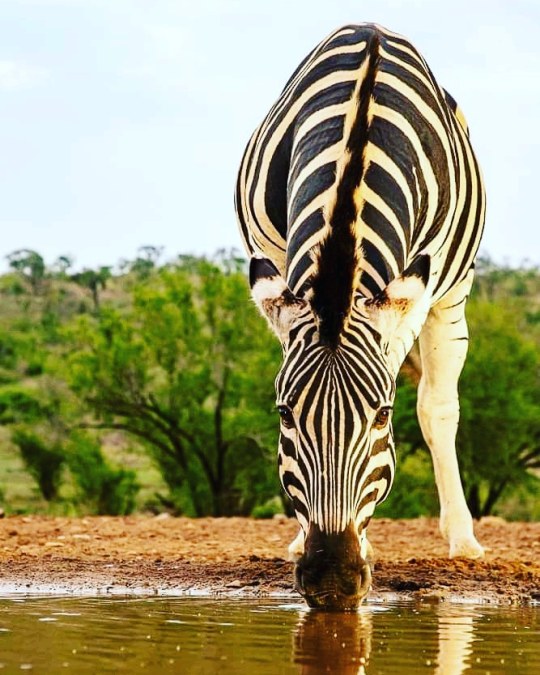
Highlights:
The crater floor is covered by various landscapes that range from dense mountain forests and woodlands to grasslands, lakes and swamps. Water sources include the two main rivers, Munge River in the west and Lerai River in the east as well as the Ngotokitok spring that spills into a swamp.
Huge herds of ungulates dominate the crater floor with zebras, wildebeests, elands, Grant’s and Thompson’s gazelles being the species most commonly seen. But the crater is also home to the “big five” and elephants, lions and buffaloes are often spotted. Leopards are rarely seen as the prefer staying in the forests on the crater rim. The almost extinct black rhino can also be found in the crate and sightings aren’t rare either. Serval cats, spotted hyenas and jackals are also often seen while cheetahs are more difficult to spot.
But it is not only mammals that reside in the conservtion and great numbers of lesser flamingos can be seen at Lake Magadi, a primarily alkaline lake. Other common birds include ostriches, kori bustards, crowned cranes, white backed vultures, black kites, cattle egrets, tawny eagles, augur buzzards and many more.
A walk along the Ngorongoro Crater rim accompanied by an armed ranger takes visitors on a path created by livestock, pass moss covered trees and Masai bomas, offering breath-taking views of the crater below.
#art#french#fran?ais#sailor moon#drawing#animals#original photographers#lensblr#hoshiai no sora#bnha
13 notes
·
View notes
Text



Eastern Circuit › Zanzibar Island
Zanzibar Island
Known as the Spice Island, the beautiful island of Zanzibar on Africa’s east coast is bursting with culture and history, seemingly at odds with its idyllic geography of white-sand beaches with palms swaying lazily in the sea breeze. Together this makes Zanzibar a fabulous place to explore as well as a dream to relax and unwind.
Expand map
Zanzibar is the semi-autonomous part of Tanzania in East Africa. It is composed of the Zanzibar Archipelago in the Indian Ocean, 25–50 kilometres (16–31 mi) off the coast of the mainland, and consists of many small islands and two large ones: Unguja (the main island, referred to informally as Zanzibar) and Pemba. The capital is Zanzibar City, located on the island of Unguja. Its historic centre is Stone Town, which is a World Heritage Site.
Portuguese invasion and control of the Swahili Coast in the late 16th century ended the golden age of the archipelago, although the Omani Arabs returned to power less than a century later. Today, many of the winding streets and high townhouses of old Stone Town remain unchanged and visitors can walk between the sultan’s palace, the House of Wonders, the Portuguese fort and gardens, the merchants’ houses, and the Turkish baths of the old city. Day-long spice tours to working plantations offer visitors the chance to observe the cultivation of cloves, vanilla, nutmeg, cinnamon, and other spices that have made the island famous.
Zanzibar’s coastline offers some of the best beaches in the world, but sand and surf vary depending on what side of the island you’re on. On the east coast, waves break over coral reefs and sand bars offshore, and low tide reveals small pools of starfish, small minnows, and anemones. Up north, ocean
#zanzibar#stonetown#old spice#markiplier#cars#kingdom hearts#travel#wonder woman#photographers on tumblr#drawing#animals#art
6 notes
·
View notes
Text
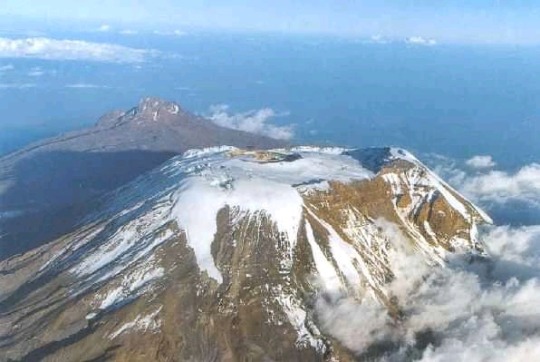

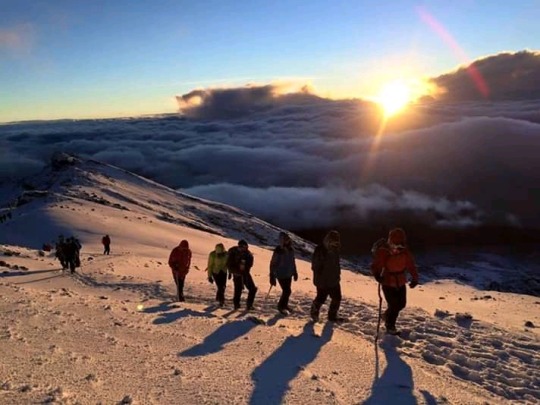
The Beginner’s Guide to Climbing Mount Kilimanjaro
There are many reasons why Kilimanjaro is scribbled onto the bucket list of most adventurer’s minds. The most obvious of these reasons may include the fact it is the highest free-standing mountain in the world.
It may be because Kilimanjaro is the African jewel in the seven summits crown (the highest peak in each continent). You may want to experience a mountain that has so many varying ecosystems on it, from rainforest and alpine desert zones all the way up to arctic. Or it could just be the allure of an African adventure.
mount-kilimanjaro-giraffe
But the real beauty of Kili lies in the subtleties. They begin before you even hit the base of the mountain, arriving into the rural sections of Tanzania. Here you become acquainted with the infectious smiles of the Swahili people, something you carry with you for a long time. Their positive attitude and relaxed pace only serve to enrich the journey that awaits you. The word ‘safari’ means a journey in Swahili, and in a literal and metaphorical sense, a journey is what Kilimanjaro provides.
Tanzania is a nation that has enjoyed relative peace, compared to other neighbouring countries. The people credit this peace to their first president, Julius Kambarage Nyerere whom they affectionately refer to as “Baba Wa Taifa” (the father of the nation).
From the campfire songs and soul polishing laughs to the gentle evening farewells of “lala salama” (sleep peacefully).
Under the watch of the mountain, you will fall in love with Tanzania, before you even begin your climb.
Mount-Kilimanjaro
So when is the best time to go?
Kilimanjaro is 300km south of the equator and Tanzania is iconically tropical, with wet and dry seasonal variations laid over a hot muggy climate.
Tanzania experiences two rainy seasons, a short one in November to mid-December and the long rainy season from March to May. The routes on Kili can be wet and muddy underfoot during these seasons. If you care less about monsoonal weather and more about solitude then you may prefer these times to climb as there are far fewer people.
July to October is peak time on the mountain, due to it coinciding with the European summer holidays. It’s dry and cooler than the Christmas months but prepare for some cold nights.
If you want to enjoy similar weather but with far less people then June is an optimal time for you as it’s just before the holidays, but still peak climbing season.
December to February are much warmer and have good visibility. The short rainy season can run into December though so it may still be wet. These months also coincide with the Christmas holidays so it can still get busy.
What’s the best route for you?
The route you choose will largely depend on your level of experience, fitness, budget, time frame as well as your personal wants.
The number of trekking days are adjustable on most routes as well as food and comfort options on the hike.
You can skip acclimatisation days and make very quick ascents on Kilimanjaro, however, this is not advised as altitude sickness is no joke on the mountain. You pay for experience and this means doing things properly. Decent guides will ensure proper equipment, experience in weather and trekking conditions, good food, and a good time frame to allow for rest and adjustment.
#mountains#trekking#africa#mountain kilimanjaro#original photographers#travel#photographers on tumblr#drawing#animals#artists on tumblr#nature#photography
6 notes
·
View notes
Text



Serengeti Safaris | Tanzania
The Serengeti National Park is Africa's most famous. Renowned for its incredible concentrations of predators and the Great Migration of two million grazers, a safari here is guaranteed to be exceptional. The endless grassy plains are amongst the richest grazing grounds in the African bush, and therefore home to the largest herds and the highest concentrations of predators on the planet.
The Serengeti Africa is one of those very rare places that has a huge reputation, yet still somehow manages to surpass expectations and take your breath away. Surrounded by remarkable tribes such as the Massai and Hadzabe, this wider area is also fascinating from a cultural perspective. The whole park is a world heritage site, and the varied eco-system coupled with the huge volume of wildlife means you can spend ample time in different locations and never feel like you’ve seen it all. From the dramatic Kjopes in the north, to the acacia dotted endless plains to the south, it is not just the animals which makes a safari in the Serengeti so remarkable. In a nutshell, it is rightly the most celebrated wildlife reserves in the world; there is nowhere else to match it. It is outstanding!
Serengeti National Park | The Wildlife
There is such a variety of species to be found in the Serengeti and definitely too great a number to mention here, which is why it is such an integral part of a Tanzania safari. The park's main attraction is the Great Migration, consisting of up to 2 million wildebeest, 200,000 zebras and 350,000 thompson, impala and grant's gazelles - many consider it to be the most spectacular remaining African wildlife spectacle. The predator viewing here is exceptional with approximately 3-4,000 lion and huge numbers of cheetah, leopard and hyena. Other animals commonly found in the park include topi, eland, hartebeest, buffalo, elephant, caracal, serval, bat-eared fox, hyrax, genet, hares, porcupine, aardvark, giraffe, jackal, mongoose, crocodile, monitor lizard, aardwolf, many kinds of primates including baboons, vervet and colobus monkeys, and over 500 species of bird.
Where is the Serengeti?
The Serengeti is the main component of a Northern Tanzania Safari Itinerary. It is a vast stretch of endless plains brimming with wildlife in the North East of Tanzania - Tanzania's border changes it to Kenya's famous Masai Mara. It is only a short flight from Arusha (along with many other Northern airstrips!) - a flight you absolutely must consider if you are ever visiting other Northern Tanzania parks. Many travellers also visit Northern Tanzania to experience the vibrant Maasai culture in the Ngorongoro Highlands, but also to go into the Ngorongoro Crater itself. There are also other smaller surrounding parks, Lake Manyara and Tarangire, but these are more "add on" destinations - The Serengeti in our view is the real star of the show.
When to go to the Serengeti National Park
To focus solely on the Great Migration would be to do this park a grave injustice. Even taking the Great Migration out of the equation, it can be argued that the Serengeti is still the finest park in Africa. Vast herds of grazers, huge prides of lion, spectacular expanses of uninterrupted views, wildebeest river crossings, great leopard sightings, fantastic vast cheetah inhabited plains and some of the best camps in Africa - as such, it is an incredible safari destination year-round.
Serengeti Migration | When is the Great Migration in the Serengeti?
The Wildebeest Migration is often thought to be the star of the show on a Tanzania holiday. Contrary to popular misconceptions, the herds can be seen in the Serengeti all year round. There are some better months to visit to get the full impact of the sheer size of the herds such as in July – October when they are crossing the mighty Mara River in Northern Serengeti (see our videos of crossings here), or in February when they all congregate for calving season in the southern Ndutu plains. Book now with us E-mail: [email protected]
6 notes
·
View notes
Text

Mount Kilimanjaro or just Kilimanjaro(/ˌkɪlɪmənˈdʒɑːroʊ/),[8] with its three volcanic cones, Kibo, Mawenzi, and Shira, is a dormant volcano in Tanzania. It is the highest mountain in Africa and the highest single free-standing mountain in the world, with its summit of 5,895 metres (19,341 ft) above sea level and at about 4,900 metres (16,100 ft) high from its plateau base. Kilimanjaro is also the fourth most topographically prominentpeak on Earth. The first people known to have reached the summit of the mountain were Hans Meyer and Ludwig Purtscheller, in 1889. The mountain is part of Kilimanjaro National Park and is a major climbing destination. Because of its shrinking glaciers and disappearing ice fields, the mountain has been the subject of many scientific studies.
Kilimanjaro
The Kibo summit of Mount Kilimanjaro.
Highest pointElevation5,895[1] m (19,341 ft) [2][3]Prominence5,885 m (19,308 ft) [4]
Ranked 4th[5]Isolation5,510 kilometres (3,420 mi)Listing
Seven Summits
Highest mountains of Africa
Volcanic Seven Summits
Country highest point
Ultra
Seven Third Summits(Mawenzi)
3 notes
·
View notes
Text
Tag you your best friend who you will want to be in Tanzania safari .

4 notes
·
View notes